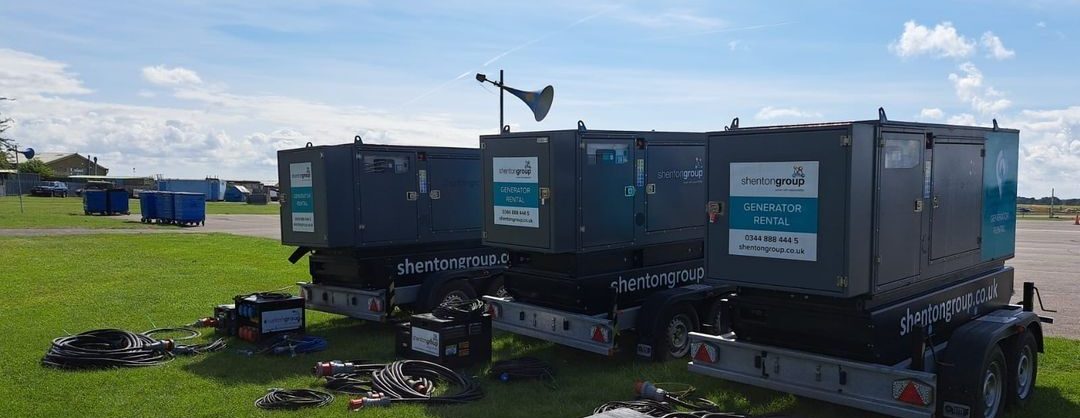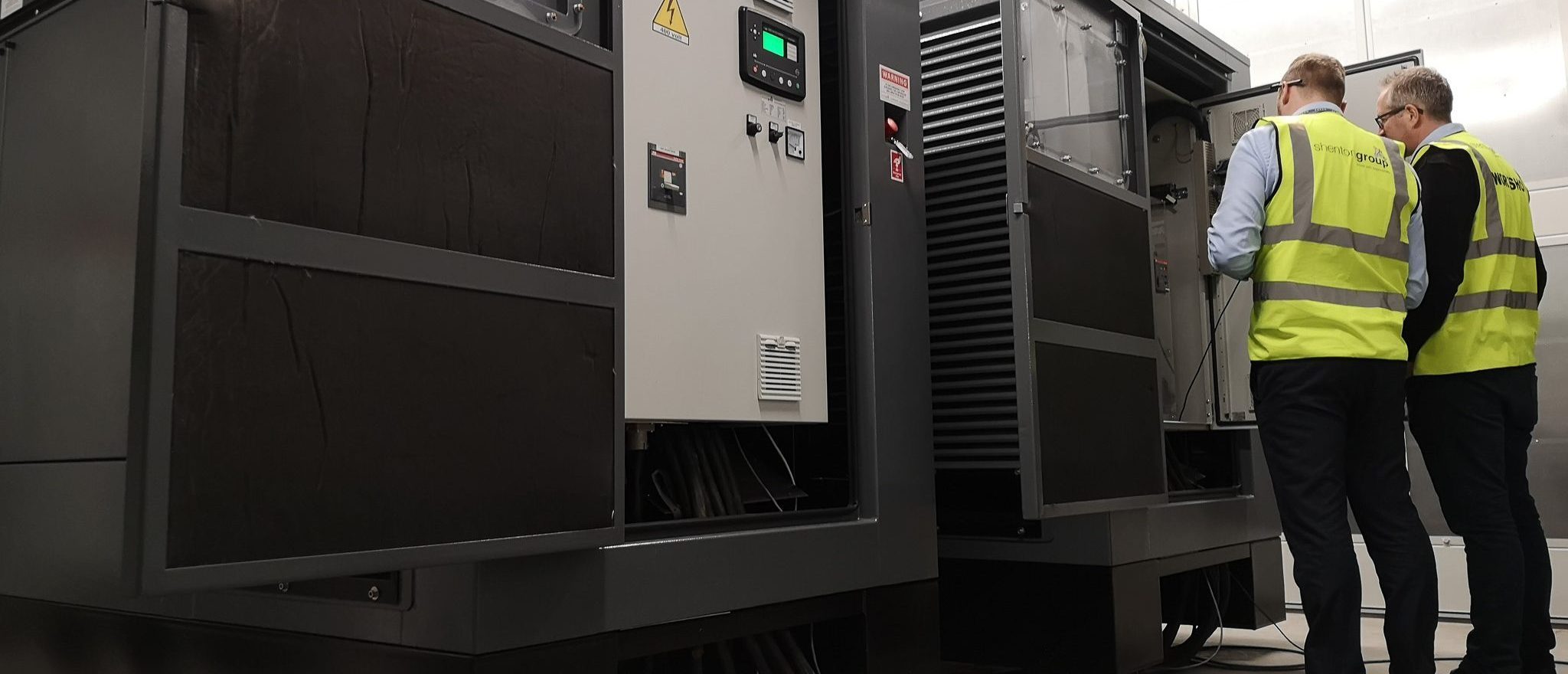‘Peak lopping’ otherwise known as ‘peak shaving’, is the use of an additional power source (such as a generator) in synchronisation with the mains power supply, to deliver enough power to meet the peak demand that cannot be met by the mains supply.
Using a generator to provide a ‘peak lopping’ power supply, will enable the use of the most cost-effective mains power but provide the added support to reinforce the mains power during periods of high demand.
‘Peak lopping’ otherwise known as ‘peak shaving’, is the use of an additional power source (such as a generator) in synchronisation with the mains power supply, to deliver enough power to meet the peak demand that cannot be met by the mains supply.
Using a generator to provide a ‘peak lopping’ power supply, will enable the use of the most cost-effective mains power but provide the added support to reinforce the mains power during periods of high demand.
What is an ATS panel? (Automatic Transfer Switch)
ATS panels (or automatic transfer switch panels) are used in combination with standby generators to automate the switch between the mains power source and a generator in a blackout. An ATS panel ensures that you do not have to manually switch to an alternative power supply, such as a backup generator in the event of a power outage. An ATS will automatically switch to another power and an ATS panel ensures that a generator doesn’t require manual operation. When combined with a UPS (Uninterruptible Power Supplies) there will be a seamless supply of power as the UPS will bridge the gap in power whilst the generator starts up, reducing the risk of data loss, damage to electrical equipment, or any disruption to a business or facility. Without a UPS, there will be approx a 15 second delay in power as the generator starts up.
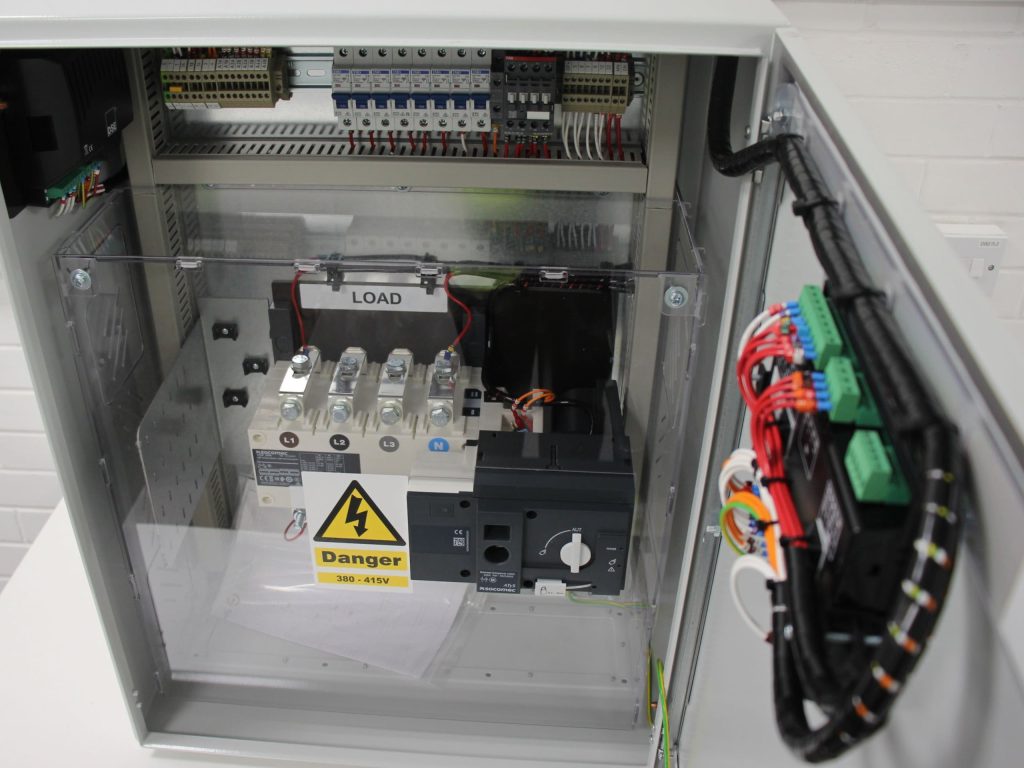
The ATS panel monitors the incoming AC mains supply so that, should there be a blackout, the electrical load is transferred to the standby generator. When the mains power is restored, the ATS transfer switch then returns the building back to the mains supply, and shuts down the backup generator.
Using an Automatic Transfer Panel for Safety Reasons
An automatic transfer switch or manual transfer panel is installed as part of any generator project where there is a mains supply.
The benefit of an automatic transfer panel system over a manual system is the ATS panel moves the electrical load without any manual process, reducing downtime. In the event of a power outage the transfer switch automatically switches its incoming power supply from the mains to the generator, triggering the generator to start up. The generator is ready to take load within approx. 15 seconds.
Without ATS switches, organisations would have to manually change over from mains to the generator and therefore suffer a longer break in electricity and depend on personnel being available to carry out this task. An automatic transfer switch panel will eliminate this need for a manual change.
ATS Panel Manufacturers
Shenton Group provides complete turnkey solutions consisting of generators, UPSs and ATS panels, designed to your requirements.
We design and manufacture our own ATS panels, often as part of a turnkey standby power solution that links an automatic transfer switch, UPS and standby generators with remote monitoring and associated security and safety features.
To ensure you get the correct backup power arrangement for your needs, get in touch with the UK’s leading technical experts today.
What Is the Difference Between ATS and AMF Panels?
Automatic Transfer Switches (ATS) and Automatic Mains Failure (AMF) panels both switch an electrical load from normal supply to a standby generator supply, and back to the mains when required and are in effect just different terminology for the same thing. To find out more about AMF panels and how they work, read our blog which further explores all AMF-related topics.
An ATS Panel Solution for Amazon Distribution Centre
After an initial assessment, Shenton Group provided a 275kVA generator to an Amazon distribution centre and as part of the project, to ensure seamless generator changeover, a 400A ATS (automatic transfer switch).
For more information about any ATS Panel or generator solutions, get in touch with our technical experts today, and we will be happy to provide you with the best course of action for your premises.
Why Choose Shenton Group?
Shenton Group is an established power back provider with over 40 years of experience providing peace of mind with a turn-key solution. Our highly skilled team of technical experts can provide you with the answers to any questions you have.
We manufacture a fully bespoke range of reliable standby power generators and offer ongoing technical support and maintenance service contracts to ensure you never fall victim to a power failure.Find out more about our products and services.
National Grid Set to Lose Responsibility of Overseeing UK Electricity & Gas Systems
After 30 years of managing the energy system in England, Scotland and Wales, government ministers are planning to remove the National Grid as the electricity system operator as it looks to meet its 2050 net-zero emissions target.
Management of the UK’s electricity and gas systems, including balancing supply and demand to ensure electricity supply, is set to change hands as part of a revolution of our electricity network, driven by smart digital technology.
The responsibilities of preventing blackouts and keeping the power on are set to be given to an independent body, following recommendations from Ofgem earlier this year. The government’s business department is looking to create an impartial organisation separate from the FTSE 100 utility, as part of plans that could save £10bn a year by 2050 and create 10,000 jobs for electricians, data scientists and engineers.
Better Value for Bill Payers?

Aside from looking to help the country meet their 2050 net-zero emission target, ministers are taking up the advice of Ofgem that a new independent body overseeing the electricity system would deliver better value for bill payers, as well as more effectively deliver the changes required to meet the 2050 targets.
Speaking to The Guardian, Anne-Marie Trevelyan, the energy and climate change minister, said the rules would allow households to “take control of their energy use and save money” while helping to make sure there is clean electricity available “when and where it’s needed”.
Electricity demand is on the rise with the uptake of electric cars on the rise, while many new homes and existing homeowners turn to low carbon heating, such as electric heat pumps.
As reported in the Financial Times, ‘the government said it was important to reassess the “governing institutions” that underpin the country’s energy system as it “undergoes a transformation equal to any it has undergone in the past” as Britain switches away from polluting fossil-fuel power stations to rely on more weather-dependent renewables such as wind and solar.’
Time for Change
In recent years, the National Grid’s role in electricity and gas infrastructure has come under government scrutiny given a conflict of interest over their ownership of electricity and gas infrastructure throughout the UK, and their work with subsea cables that trade electricity with France, Belgium and the Netherlands. Furthermore, ministers have already questioned the organisations’ involvement in overseeing the energy system, ever since the power cut that affected 1 million homes in England and Wales back in 2019.
The National Grid’s electricity systems operation has previously been valued at £300m by Barclays.
Greener Energy Supply

There is a string of new proposals currently being mooted to help connect the millions of electric vehicles that will be on UK roads in the future, with new regulations being suggested that aim to make it easy for electric cars to export electricity from their batteries back to the power grid or to property. As reported in The Guardian, the idea behind this is to ‘help large-scale and long-duration batteries play a role in storing renewable energy so that it is available when solar and wind power generation levels are low.’
As technology evolves, the government is looking to ensure our energy systems can cope with the demands of the future. Jonathan Brearley, Ofgem’s Chief Executive has said that the UK requires a ‘revolution’ in how we use electricity and that a new digital energy system is ‘essential’.
Keep up to date with the latest industry news and insight via the Shenton Group blog.
Shenton Group and EMS Group Partnership
Shenton Group has recently partnered up with the EMS Group and their dedicated experts in multidisciplinary environmental consultancy. As the UK’s leading technical experts in standby power, uninterruptible power supplies and combined heat and power systems, our new partnership will enable us to provide a more holistic offering to our loyal customers.
Our Unique Skillsets
With EMS’ environmental expertise and experience coupled with Shenton Group’s extensive technical knowledge, this partnership will provide customers with peace of mind that they are fulfilling their environmental compliance requirements.
A particular area of focus for us is the Medium Combustion Plant Directive (MCPD). The MCPD requires all new and existing Medium Combustion Plants (these including boilers, turbines and engines) with a rated thermal input between 1MWth and 50MWth to have a permit in place by the relevant deadline.
Our Goal
Our goal is to regulate and limit the emissions of certain pollutants from the combustion of fuels. The MCPD, mentioned above, regulates emissions of SO2, NOx and dust to air and requires the vigilant monitoring of carbon monoxide emissions (CO).
EMS’ hard-working team of environmental consultants can support you with your permit application and help you to understand your requirements better than ever. They also pride themselves on providing a diligent and proactive approach to all aspects of quality assurance for all their clients.
Envirocare
EMS support includes Envirocare. who are one of the leading UKAS and MCERTS recognised Environmental and Occupational Hygiene & Safety Consultancies. Their dedicated specialists will be on hand to ensure that you are complying with your MCPD permit by carrying out stack emissions testing. Envirocare has a team of highly dedicated industry experts who have excellent knowledge and a wealth of experience working in all sectors.
Our Partnership
Curtis Meek, the Sales & Marketing Director for Shenton Group expects great things from this partnership, especially the amazing environmental benefits to come from working together as a team.
“EMS has proven themselves to be market leaders in air and emissions services. Shenton Group are delighted to partner with EMS as the value they can add to us, and our partners is unrivalled.”- C, Meek.
Rebecca Chapman, the Consultancy Manager at EMS says that she is looking forward to working more closely with the Shenton Group in the future.
“This is an exciting opportunity for both businesses. We are delighted to be partnering up with the Shenton Group and providing more customers with peace of mind that their environmental responsibilities are being managed.” – R, Chapman
Electrical Systems: What is a Brownout?
Generally speaking, electricity supply exceeds demands, but when there is any disruption at power plants or the supply source it can lead to brownouts. With the installation of a UPS and backup generator, it is possible to avoid fluctuation issues such as brownouts or power surge and remove the reliance on electricity provided by the grid.
What is a Brownout?
A brownout occurs when the voltage dips below the usual mains supply level and can last from a few seconds to hours or even days. When the weather conditions worsen or there is a growth in power demands, the additional strain on the electricity network may result in a brownout. Intentional brownouts take place too, controlled by the National Grid when they are looking to ration supplies and prevent a possible blackout. The term brownout stems from incandescent lighting dimming as the voltage is reduced.
Brownout Indicators
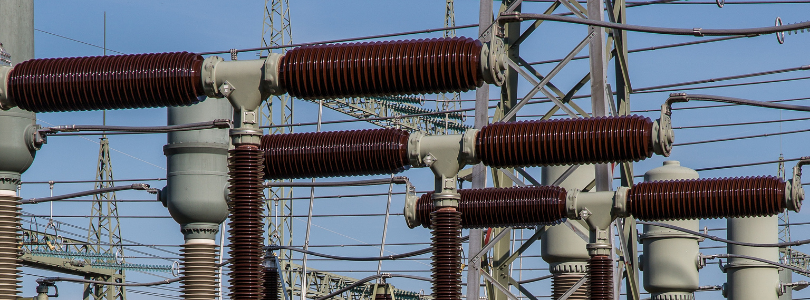
Voltage reduction is often imposed to reduce load and prevent a power outage, with common signs of an electrical system brownout including:
- Flickering lights
- Electrical appliances switching off & on again
- Intermittent internet connections
- Disruption to air conditioning
- Security system outage
What Causes a Brownout?
The demand for electricity is continuously fluctuating with power companies using their networks of generators, sub-stations and transformers to deliver electricity to their customers. Our power consumption as a nation varies and so the National Grid has a constant balancing act on its hands, sometimes leading to an unplanned outage, leaving affected homes and businesses without power.
The National Grid has previously shown strain due to power demand, with at least four market warning notices issued last winter.
When the demand pushes the energy provider to capacity, the solution is to put an intentional limit on the flow of electricity, meaning the power continues to remain on but at lower voltage levels until the demand reduces. Brownouts can also occur as a result of damage or malfunction within the grid or at the power source. This is not ideal for businesses, healthcare facilities, finance companies or server locations that rely on continuous power. Fluctuations in power can cause equipment to malfunction. Loss of power to industries such as these can have disastrous effects on security, reputation and could be life-threatening.
Brownouts and Power Outages Caused by Weather
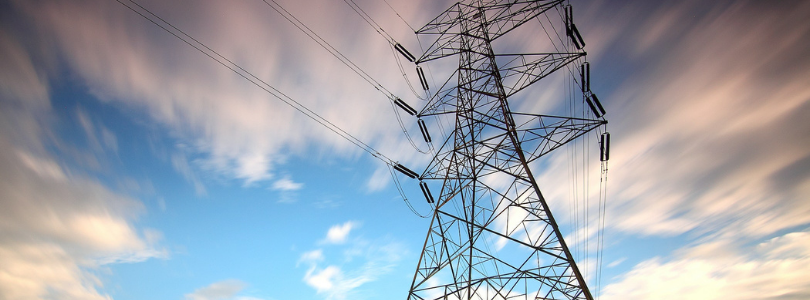
Planned outages are a lot easier for businesses and organisations to handle than an unforeseen dip or cut in electric power due to bad weather. In adverse weather conditions, there can be a huge surge in demand for power to keep homes warm and the lights on, and the power companies have to enforce brownouts to balance supply and prevent blackouts.
Equally, at the height of summer, air conditioning usage can shoot up causing a spike in the demand for power and energy providers may enforce voltage reductions until reserves are restored.
What’s the Difference Between a Brownout and Blackout?
Blackouts are when the power switches off completely, rather than a temporary reduction in voltage.
Power cuts or blackouts are however often less damaging and disruptive than a brownout, because when devices continue to receive power at lower levels, some may malfunction. A reduced level of electric current may leave electronic devices like consoles, computers or televisions permanently damaged by fluctuations in electricity levels.
In the IT sector, it is paramount to protect IT loads and as such, a UPS and backup power supply are an ideal solution to bear the load should there be any issues with the National Grid. Uninterruptable power supplies (UPS) maintain the correct level of voltage when there are dips. In a brown out a UPS will take over and will ensure that your equipment has the required voltage to fully operate and will protect it from any disturbances, before potentially handing over the task to a generator.
Too much electrical load can also cause equipment to malfunction. A UPS also act as a surge protector for electronic equipment.
Put a Stop to Power Failure
Working with a huge variety of clients, the team at Shenton Group are well equipped to protect you from any power interruption. We assess your demands and put forward a plan so that in any outage, grid malfunction or temporary brownout scenario, is managed and your power supply protected. With uninterruptible power supply options available to monitor the electrical power, it is possible to prevent a surge or brownout and keep the lights, equipment and security measures on.
Shenton Group is the UK’s leading technical expert in standby power, uninterruptible power supplies, and combined heat and power, and we keep the power on and businesses operating.
Already have an existing generator or UPS on site? We offer maintenance services to ensure the battery and key components in your UPS system are prepared and all the elements of your backup generator primed and ready to go. Visit our maintenance section for more information.
How important is power continuity to your business? Click here to download your FREE guide to
planning a resilient disaster recovery plan, including a business continuity plan. Alternatively, get in touch and speak to our technical experts. The Shenton Group team will be more than happy to assist you in putting a resilient plan in place and can explain all of the options available to you.
Minimise both power surge inconvenience and potential brownout damage with the help of Shenton Group. Get in touch today.
UPS Backup Power Systems & the Importance of Maintenance
Uninterruptible Power Supplies (UPS) Service & Maintenance plans include but are not limited to, device repairs, battery management, enclosure maintenance and power conversion optimisation.
To ensure our clients get support best suited to their needs, Shenton Group offers five levels of UPS maintenance, ranging from a simple one-off annual maintenance visit, to fully comprehensive 24/7/365 emergency cover. These maintenance options allow you to pick the right plan for your equipment and your budget.
With a reputation of providing industry-leading technical expertise and customer service, Shenton Group breaks down their service levels into the following maintenance packages:
- Maxicare Plus
- Power Care Premier
- Power Care 24
- Power Care
- Power Care Lite
For a full overview of these packages and the protection they offer, check out our UPS Maintenance page.
Prefer to speak to someone over the phone? Our service team is on hand to discuss each package in detail to ensure you will get the support you need for true peace of mind.
Home Backup Power– Standby Generators for Residential Property
Home backup generators are becoming more common with property owners using standby diesel generators to provide both heat and light and keep appliances running, homes secure and the internet on.
The demand for standby generators specified for high-end properties has more than doubled over the last decade. The unreliability of the National Grid has highlighted the need for alternative power options, and the ease to obtain an independent continuous power source has driven this increase. A standby generator provides protection for your home and family when the power goes out and Shenton Group is on hand to advise, install and maintain your diesel backup generator system.
What Impact Will the Increasing Numbers of Electric Cars Have on the National Grid?
Electric car sales are on the rise, with more of us than ever before deciding to go green when it comes to motoring. While this is fantastic news for the environment, we ask what impact this Electric Vehicle (EV) uptake will have on the UK’s power network.
What Are the Energy Infrastructure Improvements Required to Cope With Electric Car Charging?
Targeted investment is required to ensure that drivers on the road are able to access suitable charging points when away from their home charger, especially on the motorway networks across the UK. Crucially, a lot of electricity infrastructure sits alongside our motorways for practical reasons.
As recently reported in Autocar, Graeme Cooper, National Grid’s project director for transport decarbonisation has said, “The government has a policy to ensure high-power on-route charging and has put £950 million of funding in place to make sure that every motorway service area in England will have adequate future-proof capacity for everyone to have clean transport.”
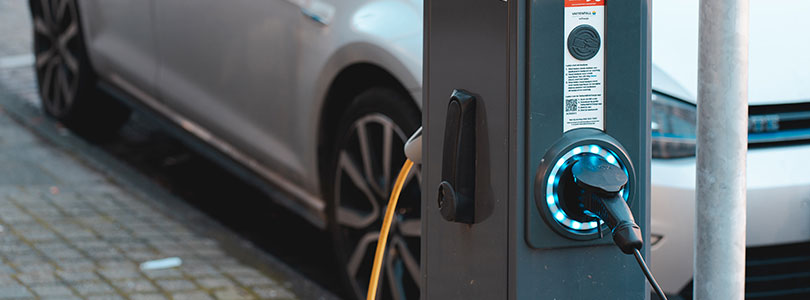
Spreading the Demand
In terms of the National Grid meeting the demand at the peak times of the day, mainly when commuters head home after work between 6pm and 8pm, there are also challenges to overcome. The Government’s EV Taskforce has made recommendations that car chargers are ‘smart by design’ meaning the charger will pause at peak times, when prices are highest, and then reconvene charging during quieter periods, but will importantly still fully charge the vehicle. When people re-charge their EVs and how they do it will have an effect on stabilising demand on the grid.
What is the Outcome if We Don’t Adapt Quickly Enough?
The government recently brought forward the deadline to ban the sale of combustion engine vehicles to 2030 leading to questions about the UK’s readiness to keep up with demand. Drivers of electric vehicles will need to be able to charge their vehicles while commuting, as well as at home. If the UK doesn’t prepare sufficiently for a surge in demand, there could be widespread power losses.
A recent report by the EV Energy Taskforce made it clear that the demand on electricity supplies would require careful management from the industry and ministers, or as reported by iNews, the National Grid would be unable to cope. Aside from more drivers wanting to charge their vehicles, many homes and buildings in the UK now have more reliance on heat fuelled by electricity, again driving the demand for more energy from a system not yet setup to cope.
Without a properly managed smart charging system for the ever-increasing numbers of electric vehicles, generators could fail. A recent example of a multiple generator failure was back in August 2019, causing chaos for millions of commuters, businesses and homeowners.
How Will the EV Charging Network Evolve?
It is yet to be seen how EV charging networks will evolve as more of us turn to electric car models, but many owners are likely to opt to allow third parties to manage their vehicle charging, if they do not have access to a charge point at home for instance. This third party element adds to the risk of power cuts with charge point operators potentially changing the charging rates of too many EVs at once, leaving the electricity system unable to respond and electricity supplies ultimately lost.
Avoiding issues such as this is wholly reliant on proper grid management, smart charging and vehicle to grid technology at times when supply is low, or there is surplus supply available to sell back to the grid during peak times.
Shenton Group are in the process of reviewing our fleet of vehicles and moving across to electric. There are plans to put charging points at our offices to allow for charging out of peak times also providing electricity at a much cheaper rate. This is just one of the many ways we are moving towards a more sustainable future. After all, our tag line is “Power with Responsibility”.

Can Your Business Cope With Power Cuts?
At Shenton Group, we support businesses and organisations to ensure that they have a constant power supply, even in the event of a power outage. Whether you need a generator onsite, a UPS system or a call out service that provides power quickly, we are here to help. By having a plan in place to protect your business’s vital electricity supply, you can continue to operate as normal should the mains power fail.
With more strain expected to be placed on the National Grid to support the constantly changing EV charging infrastructure, and the change to a greener energy supply, don’t risk being left in the dark. Speak to Shenton Group about the measures we can put in place to secure your power, and discuss today the options available to ensure tomorrow is a greener and brighter future.
What are you waiting for? Get in touch and speak to the UK’s leading technical experts!
What is Low Voltage Switchgear?
We explore what low voltage switchgear (lv switchgear) is, the importance of regular servicing of equipment and the protection that LV switchgear offers.
What is Switchgear?
The main functions of lv switchgear are to provide-
- Electrical Protection
- Electrical Isolation of installations, circuits and equipment
- Local or remote switching
Switchgear systems connected to the electric supply system, de-energise equipment for maintenance, and defect testing. Without switchgear in place, whenever there is a short circuit or failure on the power system, a heavy current runs through the electric equipment, damaging the equipment and disrupting the end user.
Switchgear is used in electric utility transmission and distribution systems at commercial or industrial facilities of varying size. The safety standards for electrical switchgear are defined by IEC in Europe.
LV Switchgear
Low voltage switchgear is rated up to 1KV and consists of low voltage switches, earth leakage circuit breakers, HRC fuses, electrical isolators, Air circuit breakers (ACB), Moulded case circuit breakers (MCCB) and miniature circuit breakers (MCB).
With LV switchgear, electrical appliances are safeguarded against short circuit and overload by an electrical circuit breaker, but the operator is not protected against internal faults. By using an earth leakage circuit breaker, which detects leakage current, operators will be guarded as the appliance is disconnected before any harm is done.

LV Switchgear Offers Electrical Protection
A key function of low voltage switchgear is to provide electrical protection against thermal and mechanical stresses of short circuit currents. This is crucial in limiting the dangerous consequences of excessive currents and separating the defective current from the rest of the installation. LV switchgear provides protection to human operatives and appliances such as electric motors.
Using LV Switchgear for Isolation Purposes
Isolation allows for the separation of a circuit or apparatus from an energised system, so that the isolated part can be worked on or maintained in safety.
Local and Remote Control Utilising a LV Switchgear
Having switchgear control allows the operator to modify a loaded system for the purpose of functional control and emergency switching. Operators can energise or de-energise a part of an electrical system or even an individual piece of equipment. It also allows for an emergency stop, when a live circuit has become dangerous.
Maintenance Services for LV Switchgear
Regular services of any make and size of low voltage switchgear should be scheduled to ensure reliable ongoing operation. The team at Shenton Group carry out annual maintenance work, or one-off servicing for LV switchgear including a visual inspection, clean and lubrication.
Contact our team for further information, or to speak to us about ongoing maintenance services.
Examples of Switchgear
Switchgear is a combination of fuses, electrical disconnect switches or breakers, which isolate, protect and control electrical equipment. Examples of switchgear include:
- Fuses
- Switches
- Relays
- Isolators
- Circuit breakers
- Contactors
Shenton Group recently carried out a low voltage switchgear project in London Docklands, and another in Liverpool for a telecoms company. If you require support, advice or are keen to start a project involving low voltage switchgear, then get in touch today.
Temporary Power for COVID Testing Sites and Healthcare Facilities
2020 and 2021 have seen a surge in the need for critical backup power solutions, with hospitals, COVID testing facilities and unfortunately morgues at full stretch.
With pop up COVID testing sites on the rise throughout the country, our generator rental services are available for those in need of a temporary power solution to help keep the UK’s mass testing and vaccination efforts going.
Here to Help in the Fight Against COVID
With a severe shortage of hospital beds in some areas of the UK, a number of temporary medical sites serving various purposes have been setup to handle the overspill. On top of this, the UK is undertaking the largest vaccination programme ever seen, at the same time as mass testing those who potentially have contracted the virus.
Because of this and the introduction of all kinds of temporary healthcare facilities, the need for a reliable power solution has perhaps never been greater.
Shenton Group are available 24/7 with standby and prime power generator equipment available to hire for short and long term periods, to supply COVID testing sites, temporary hospitals, morgues and vaccination facilities with a reliable source of power.
We are able to deliver, install and provide turnkey power solutions as well as deliver the ongoing maintenance for clients using temporary locations, so that testing, patient care or vaccinations can take place uninterrupted.
Our Generators and Power Solutions are Suitable For:
- Temporary Testing Sites
- Drive Through Testing Sites
- School, College and University Testing
- Vaccination Sites
- Temporary Medical Centres & Hospitals
- Temporary Morgue Locations

What Do We Offer?
Technical expertise ensuring the correct solution.
Our technical team will carefully assess your power needs on site and will be able to discuss different options with you ensuring all of your demands are met.
National coverage – we can get things moving quickly.
With depots dotted across the UK, we can have the required rental generator prepared and on the road fast. Project management is a speciality of ours, allowing us to execute the logistics of delivering all the equipment to your site with ease.
Our team will advise you on the exact equipment required and recommend a solution tailored to the scale of the facility. With 30kVA generators up to 1250kVA available, our team can also synchronise multiple generators for larger power requirements.
We can deliver a solution for everyone.
With an array of equipment, supplies and expertise available, we are able to provide a temporary power solution that works for you. No matter if, you require generator rental for lighting, temperature control, or equipment, our team of engineers are ready to help.

The Benefits of Choosing Shenton Group as Your Supplier
We have continued to work safely and effectively throughout the pandemic, providing power solutions to care homes, retail clients and healthcare locations.
We are adept with the safety procedures are requirements that come with working with hospitals and NHS Trusts, and have done for a number of years. We provide generator maintenance contracts and use industry-leading equipment to give clients that peace of mind and crucially for healthcare, guaranteed reliable power.
Rather than just provide a rental generator, we offer continued help to our clients. We will arrange the logistics of delivery, complete the setup of the generator including full testing and fuel supply, and if necessary provide an engineer for the duration of the project too. We can continue to monitor, maintain and support you with the power supply for as long as the temporary site is operational.
At Shenton Group, we have a culture of dedication, persistence and innovation and in these testing times, we are here to help. Our team of project managers and technical experts are just a call away, so please do get in touch if you require a temporary power solution.












